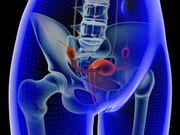Significant reduction in postmenstrual spotting, dysmenorrhea, and discomfort related to spotting
TUESDAY, Aug. 1, 2017 (HealthDay News) — Laparoscopic niche resection is associated with improvement in niche-related symptoms and/or fertility-related problems in women with a large niche (residual myometrium [RM] <3 mm) in the uterine cesarean scar, according to a study published online July 13 in BJOG: An International Journal of Obstetrics and Gynaecology.
Anke Vervoort, M.D., from the VU University Medical Center in Amsterdam, and colleagues conducted a prospective cohort study involving women with a large niche and complaints of postmenstrual spotting, dysmenorrhea, intrauterine fluid accumulation, and/or difficulties with embryo transfer due to distorted anatomy.
The researchers found that in 79.2 percent of the 101 women who underwent a laparoscopic niche resection, the main problem was improved or resolved. There was a significant reduction in postmenstrual spotting by seven days at six-month follow-up compared with baseline. Significant reductions were also seen in dysmenorrhea and discomfort related to spotting. At follow-up, there was a significant increase in RM. For 86.9 percent of the women with intrauterine fluid at baseline, the intrauterine fluid was resolved. Overall, 83.3 percent of women reported being (very) satisfied. There was an increase in the physical component of quality of life, while no change was seen in the mental component.
“A laparoscopic niche resection reduced postmenstrual spotting, discomfort due to spotting, dysmenorrhea, and the presence of intrauterine fluid in the majority of women and increased the RM,” the authors write.
Copyright © 2017 HealthDay. All rights reserved.








